Abstract
Maximal static inspiratory and expiratory pressures (Pimax and Pemax) were measured in six different positions in 40 patients with advanced chronic airflow limitation and in 140 normal subjects to determine whether posture influences respiratory muscle strength. Patients with chronic airflow limitation were studied on days 1 and 5 of an acute exacerbation. There was no postural effect on maximal static pressures in the normal subjects. We divided our patients with chronic airflow limitation into "moderate" and "severe" groups on the basis of a Pimax in the standing position greater or less than 35 cm H2O. The seated leaning-forward position was the preferred posture in 22 of the 23 "severe" patients and 13 of the 17 "moderate" patients. Pimax was greater in the seated leaning-forward position than in the other positions studied (p less than 0.001) on days 1 and 5 in the "severe" patients and (p less than 0.05) on day 5 in the "moderate" patients. Posture had no influence on Pemax in patients with chronic airflow limitation. There was a significant improvement in both Pimax (p less than 0.01 for the "severe" group and p less than 0.05 for the "moderate" group) and Pemax (p less than 0.01 for both groups) between days 1 and 5. The seated leaning-forward position was the optimum posture for the patients to generate maximum inspiratory pressures and to obtain greatest subjective relief of dyspnoea.
Full text
PDF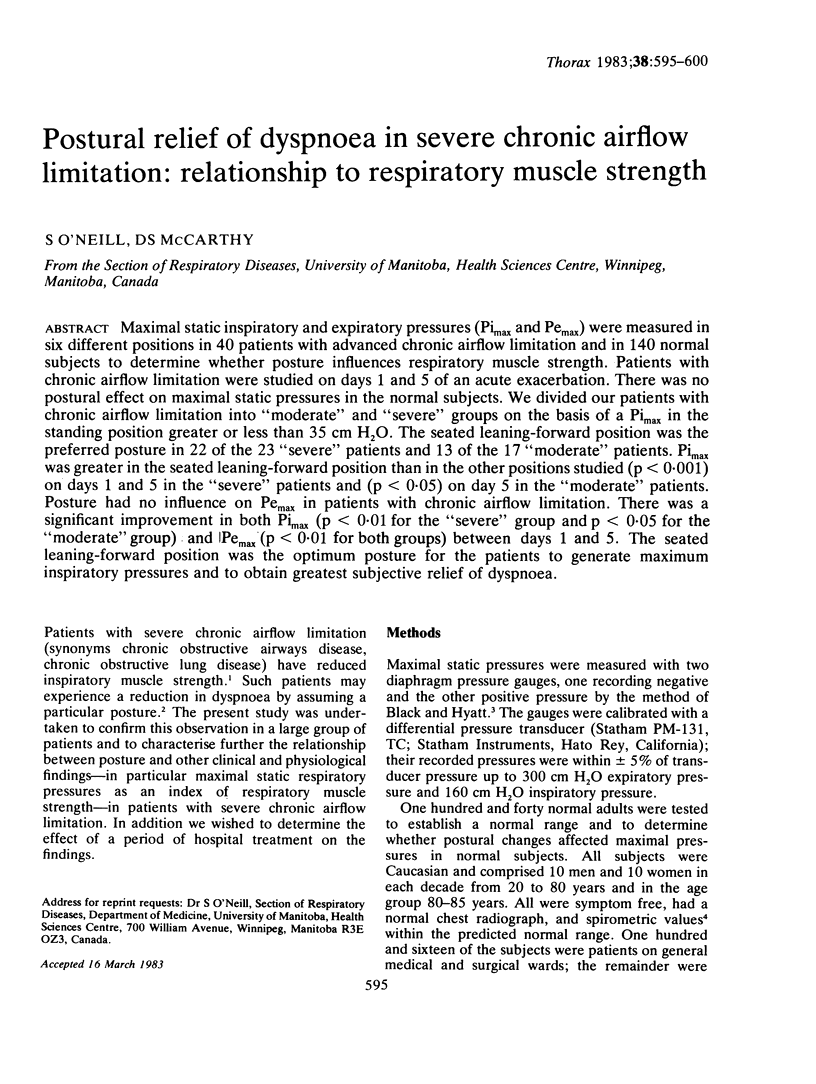
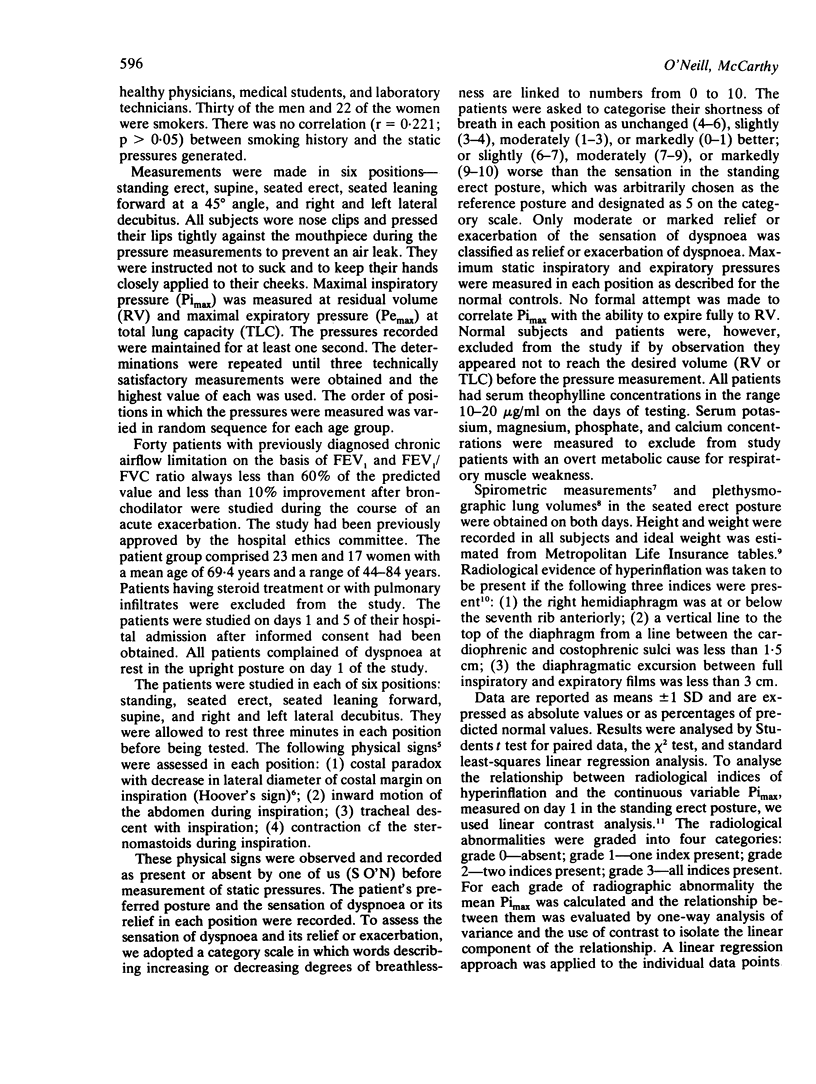
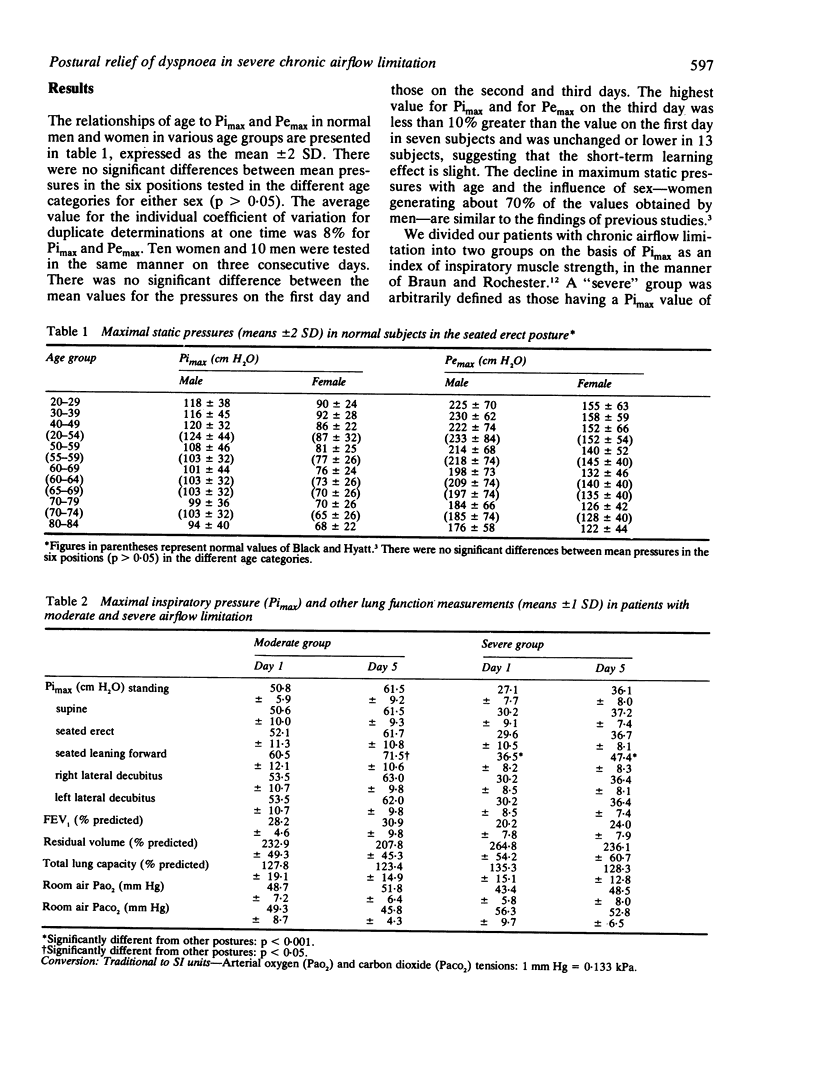

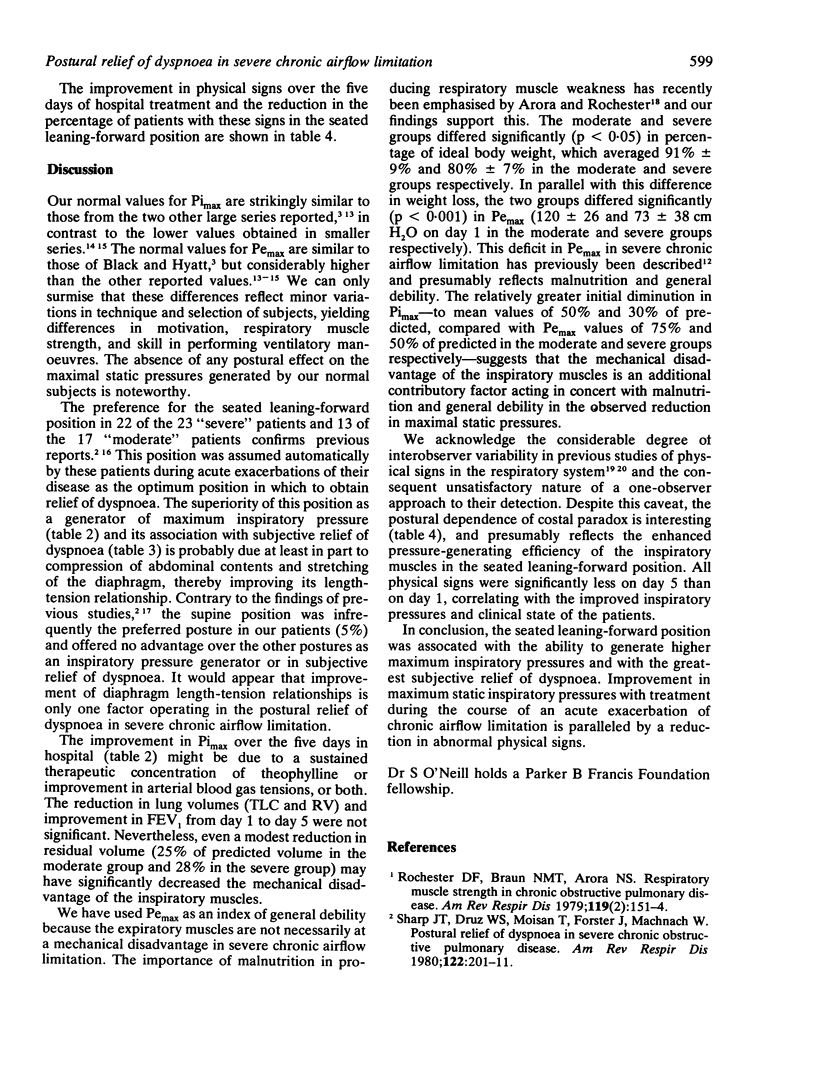
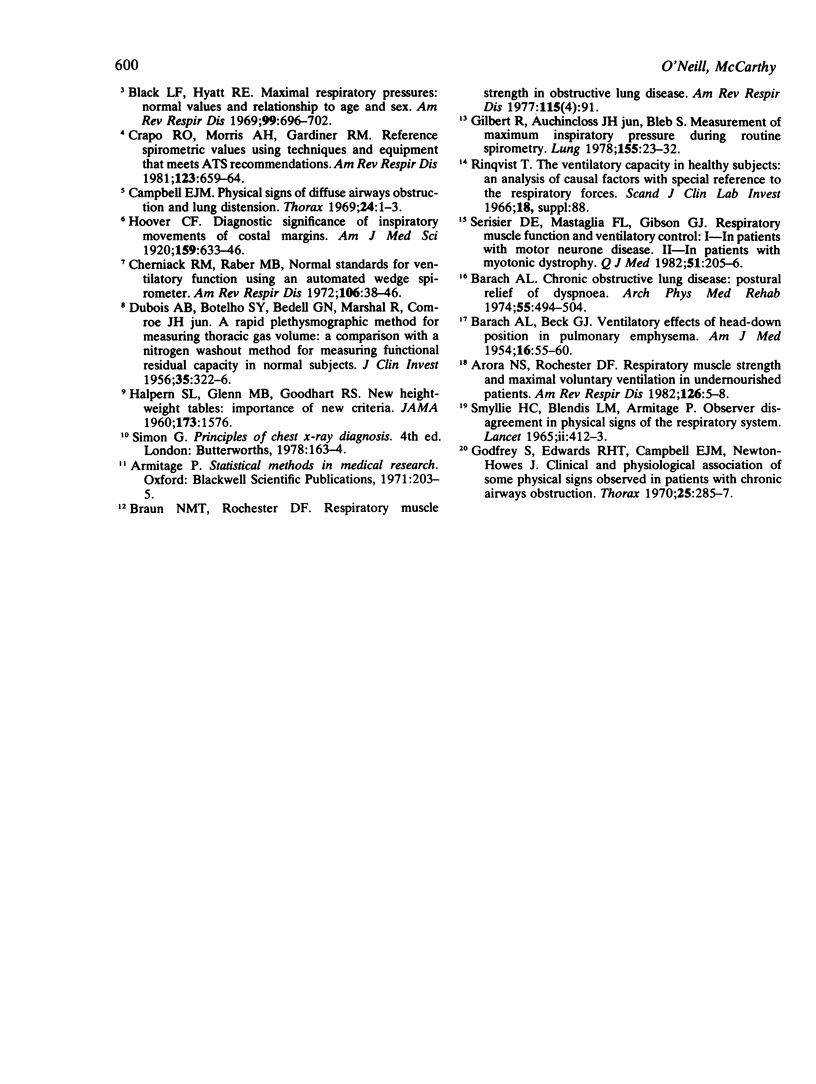
Selected References
These references are in PubMed. This may not be the complete list of references from this article.
- Arora N. S., Rochester D. F. Respiratory muscle strength and maximal voluntary ventilation in undernourished patients. Am Rev Respir Dis. 1982 Jul;126(1):5–8. doi: 10.1164/arrd.1982.126.1.5. [DOI] [PubMed] [Google Scholar]
- BARACH A. L., BECK G. J. The ventilatory effects of the head-down position in pulmonary emphysema. Am J Med. 1954 Jan;16(1):55–60. doi: 10.1016/0002-9343(54)90322-8. [DOI] [PubMed] [Google Scholar]
- Barach A. L. Chronic obstructive lung disease: postural relief of dyspnea. Arch Phys Med Rehabil. 1974 Nov;55(11):494–504. [PubMed] [Google Scholar]
- Black L. F., Hyatt R. E. Maximal respiratory pressures: normal values and relationship to age and sex. Am Rev Respir Dis. 1969 May;99(5):696–702. doi: 10.1164/arrd.1969.99.5.696. [DOI] [PubMed] [Google Scholar]
- Campbell E. J. Physical signs of diffuse airways obstruction and lung distension. Thorax. 1969 Jan;24(1):1–3. doi: 10.1136/thx.24.1.1. [DOI] [PMC free article] [PubMed] [Google Scholar]
- Cherniack R. M., Raber M. B. Normal standards for ventilatory function using an automated wedge spirometer. Am Rev Respir Dis. 1972 Jul;106(1):38–46. doi: 10.1164/arrd.1972.106.1.38. [DOI] [PubMed] [Google Scholar]
- Crapo R. O., Morris A. H., Gardner R. M. Reference spirometric values using techniques and equipment that meet ATS recommendations. Am Rev Respir Dis. 1981 Jun;123(6):659–664. doi: 10.1164/arrd.1981.123.6.659. [DOI] [PubMed] [Google Scholar]
- DUBOIS A. B., BOTELHO S. Y., BEDELL G. N., MARSHALL R., COMROE J. H., Jr A rapid plethysmographic method for measuring thoracic gas volume: a comparison with a nitrogen washout method for measuring functional residual capacity in normal subjects. J Clin Invest. 1956 Mar;35(3):322–326. doi: 10.1172/JCI103281. [DOI] [PMC free article] [PubMed] [Google Scholar]
- Gilbert R., Auchincloss J. H., Jr, Bleb S. Measurement of maximum inspiratory pressure during routine spirometry. Lung. 1978;155(1):23–32. doi: 10.1007/BF02730677. [DOI] [PubMed] [Google Scholar]
- Godfrey S., Edwards R. H., Campbell E. J., Newton-Howes J. Clinical and physiological associations of some physical signs observed in patients with chronic airways obstruction. Thorax. 1970 May;25(3):285–287. doi: 10.1136/thx.25.3.285. [DOI] [PMC free article] [PubMed] [Google Scholar]
- NEW height-weight tables. Importance of new criteria. JAMA. 1960 Aug 6;173:1576–1576. [PubMed] [Google Scholar]
- Rochester D. F., Braun N. M., Arora N. S. Respiratory muscle strength in chronic obstructive pulmonary disease. Am Rev Respir Dis. 1979 Feb;119(2 Pt 2):151–154. doi: 10.1164/arrd.1979.119.2P2.151. [DOI] [PubMed] [Google Scholar]
- SMYLLIE H. C., BLENDIS L. M., ARMITAGE P. OBSERVER DISAGREEMENT IN PHYSICAL SIGNS OF THE RESPIRATORY SYSTEM. Lancet. 1965 Aug 28;2(7409):412–413. doi: 10.1016/s0140-6736(65)90759-2. [DOI] [PubMed] [Google Scholar]
- Serisier D. E., Mastaglia F. L., Gibson G. J. Respiratory muscle function and ventilatory control. I in patients with motor neurone disease. II in patients with myotonic dystrophy. Q J Med. 1982 Spring;51(202):205–226. [PubMed] [Google Scholar]
- Sharp J. T., Drutz W. S., Moisan T., Foster J., Machnach W. Postural relief of dyspnea in severe chronic obstructive pulmonary disease. Am Rev Respir Dis. 1980 Aug;122(2):201–211. doi: 10.1164/arrd.1980.122.2.201. [DOI] [PubMed] [Google Scholar]


